Navigation
Styli
Straight styli
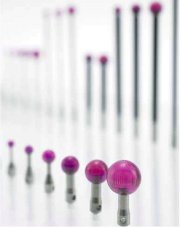
For simple features with which direct contact can be made.
Star styli
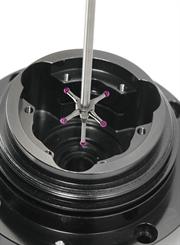
For surfaces and holes with which direct contact can be made. This configuration gives flexibility, enabling the tip to make contact with different features without changing the stylus.
Swivel styli
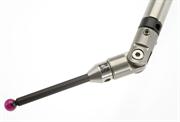
For angled surfaces and angled holes, this configuration gives flexibility, enabling you to make contact with different features without changing the stylus.
Disc styli
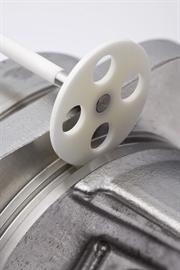
These styli are used to probe undercuts and grooves within bores, which may be inaccessible to star styli. Probing with the ‘spherical edge' of a simple disc is effectively the same as probing on or about the equator of a large stylus ball. However, only a small area of this ball surface is available for contact and hence thinner discs require angular alignment in order to ensure correct contact with the feature being probed.
Semi-spherical disc styli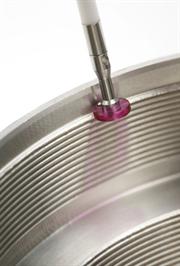
Also for undercuts, stepped bores and grooves within bores. Using the hemispheres above and below you can also measure in the Z direction e.g. to measure the width of a groove.
Cylinder styli
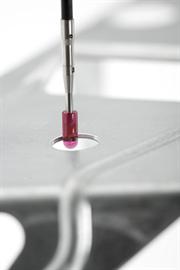
For measuring sheet metal, pressed components and thin work pieces with which proper contact cannot be guaranteed with ball styli. In addition, various threaded features can be probed and the centres of tapped holes located. Ball-ended cylinder styli allow full datuming and probing in X, Y and Z directions, thus allowing surface inspection to be performed.
Ceramic hemispherical styli
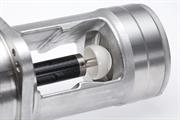
For measuring deep features and bores. Suitable also for contact with rough surfaces, as the roughness is mechanically filtered out by the large diameter surface.
Adaptor plates
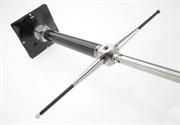
If you need to measure certain features repeatedly, it is a good idea to set up the required styli configurations on adaptor plates.
Extensions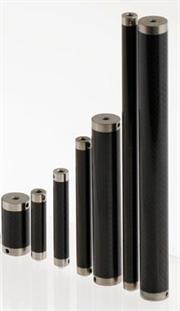
Extensions are used for measuring very deep features and bores, or probing points that are difficult to access.
Accessories
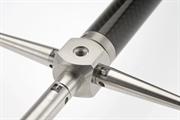
Bodies and cubes - Combine to create specific styli configurations.
Knuckles - The angular alignment of the probe component for making vertical contact with angled work piece surfaces or angled holes.
Stylus selection checklist
- Always use styli that are as short and stable as possible.
- Ensure that long stylus components have the required stability.
- Check that the styli you use have no defects, particularly to the thread and the contact area.
- If you are getting variations in data, check that the probe component is firmly attached.
- Always replace worn styli.
- Use components that are thermally stable?
- Consider the ambient conditions.
- When putting together stylus configurations, refer to the permitted masses as specified by the sensor manufacturer.
- Avoid too many or unnecessary thread connections.
- Use the lowest possible number of separate components.
- Do you have scanning applications? Take advantage of the benefits offered by silicon nitride balls when scanning aluminium!
- Use the largest possible balls. Large ball styli act as mechanical filters on the surface of the work piece. The fine structures on the surface of the work piece are scarcely recorded with large balls, which prevents random measurement variations (flyers).
- Styli should always be aligned at right-angles, or as close to a right angle as possible, to the planes being measured. For angled measuring planes, angled cubes and knuckles are available to ensure that styli are accurately aligned. The same applies when measuring angled bores.
- Ensure that the measuring force and dynamics suit the stylus components. With small ball styli with a slim stem, you should reduce these values when necessary.
Ball material properties
Stylus type | Material | Grade | Deviation from spherical form | Structure | Composition | Purity | Density | Hardness | Compression strength | Bending strength | Fracture toughness |
- | - | - | (µm) | - | (wt%) | (%) | (g/cm³) | HV | (MPa) | (MPa) | (MN/m³/²) |
AL2O3 ruby balls | Synthetic ruby monocrystalline | 5* | 0.13 | Mono | 99% AL2O3 | 99.9 | 3.99 | 2300 | 2100 | 400 - 700 | 1 |
Silicon nitride balls | Hard pressed SI3N4 | 5* | 0.13 | Poly | SI3N4 | 90 | 3 - 3.2 | 1600 | 3000 | 850 | 6 |
Zirconia oxide balls | Sintered ZrO2 | 5* | 0.13 | Poly | ZrO2 | 90 - 95 | 6.05 | 1200 | 2000 | 1000 | 10 |
Alumina hollow balls | White ceramic sintered alumina AL2O3 | - | 1 | Poly | AL2O3 | 99.8 | 3.8 - 3.9 | 1900 | 2500 | 350 | 3.5 |
Silver steel discs | Silver steel | - | 1 | - | - | - | 8 | 450 | - | - | - |
Silver steel simple cylinder | Silver steel | - | Roundness 4 µm | - | - | - | 8 | 200 | - | - | - |
Ruby ball ended cylinder | Synthetic ruby | 5* | 0.13 concentricity: ball / cylinder 4 µm | Mono | 99% AL2O3 | 99.9 | 3.99 | 2300 | 2300 | 400 - 700 | 1 |
Tungsten carbide ball ended cylinder | Tungsten carbide | - | +20 µm end radius | - | 92 - 93.5% WC 6.5 - 8% CO | 14.8 | 14.95 | 1550 | 6000 | - | - |
Silver steel simple pointer | Silver steel | - | Cone angle 30° | - | - | - | 8 | 300 | - | - | - |
Tungsten carbide radius end pointer | Tungsten carbide | - | Cone angle 30° | - | 92 - 93.5% WC 6.5 - 8% CO | 99.9 | 15 | 1550 | 6000 | - | - |
Aluminium hollow balls | AL. alloy 6082-T6 | - | 30 µm | - | 95.2 - 98.3% AL | - | 2.7 | 95 | - | - | - |
Extension material properties
Material | Coefficient of expansion at 25°C |
Stainless steel | 1.6 × 10-6 / °C |
Tungsten carbide | 5 × 10-6 / °C |
White ceramic sintered alumina | 8.1 × 10-6 / °C |
Carbon fibre | -0.4 × 10-6 / °C |
Titanium | 9.2 × 10-6 / °C |
Ruby | 4.5 × 10-6 / °C |
Silicon nitride | 3.2 × 10-6 / °C |
Zirconia | 10.5 × 10-6 / °C |
The above naming protocol is used to create styli part numbers. To view and create all styli part numbers in full please go to the 'Stylus configurator' page on our website:
Straight styli
Naming protocol:
M2 STY D2R L20 EWL14 d1.4SS
Explanation:
M2 thread straight stylus with a Ø2 mm ruby ball, 20 mm in length, EWL of 14 mm and a stainless steel Ø1.4 mm stem.
Star styli
Naming protocol:
M2 STR D2R 5BALL L19.5 S32
Explanation:
M2 thread star stylus with a Ø2 mm ruby ball. It has 5 balls on the star and has an overall length of 19.5 mm (from the centre of the ball to the rear of the star mounting face when assembled on a probe). The span of the star cluster is 32 mm.
Disc styli
Naming protocol:
M2 DSC D18 SLVS T2.2 L2.6 BR-Y
Explanation:
M2 thread disc stylus with a disc diameter of 18 mm. It is made from silver steel with a disc thickness of 2.2 mm and a length of 2.6 mm. BR stands for balls/rollers followed by yes (Y) or no (N).
Cylinder styli
Naming protocol:
M2 CYL D3 SLVS L13 EWL4
Explanation:
M2 thread cylinder styli, with a critical measuring element of Ø3 mm made from silver steel. It has a length of 13 mm and an EWL of 4 mm.
Extensions
Naming protocol:
M4 EXT L15 d7 SS
Explanation:
M4 thread extension with 15 mm length, Ø7 mm, made from stainless steel.
